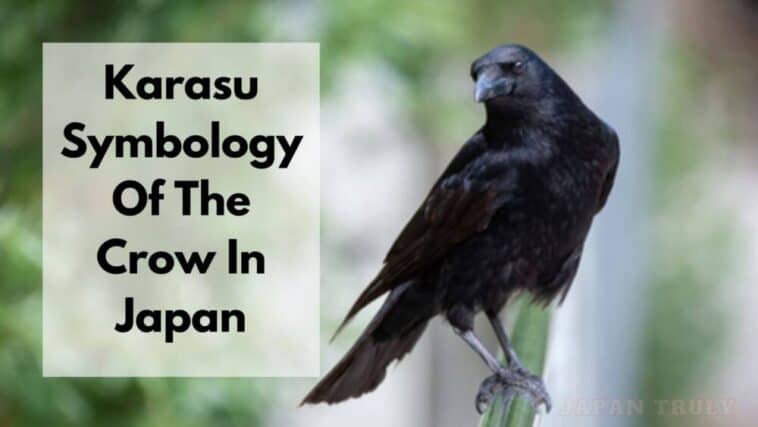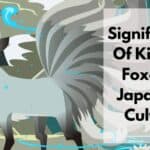Wondering what’s the Karasu Symbology Of The Crow In Japan? Here’s a blog detailing everything you need to know about Karasu and its symbology in Japan.
Eager to know what the Karasu symbol in Japan represents? Well, check out our article below to find out about the Karasu symbol of the crow in Japan!
The use of symbology has been a prevalent practice across Japan for several generations. Each symbol represents a different thing or character and these symbols can have crucial meanings which depict their importance in the Japanese culture.
One such symbol which holds major significance in Japanese traditions is the Karasu symbol aka the symbol of the crow.

Although crows are perceived to be mischievous birds that cause nothing but havoc in public places, they’re regarded as divine creatures in Japanese mythology and culture. So what are we waiting for?
Let’s learn about the Karasu symbol and how crucial it is in Japanese traditions. Make sure to read further down below!
Page Contents
Karasu Symbology Of The Crow In Japan
What Is The Karasu Symbol?
The Karasu symbol is the symbol of the crow in Japan which represents good omens and luck.
Unlike most cultures that deem crows to be unfortunate creatures, the Japanese culture places great significance on crows as they believe them to be divine birds that symbolize love, gratitude, guidance, and good luck.
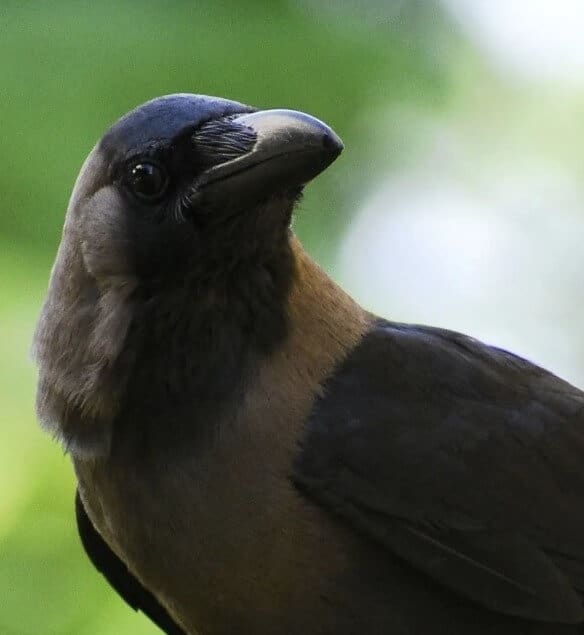
The Karasu or crow symbol is written in Japanese as “烏” and it’s similar to the bird symbol which is written in kanji as “鳥” and pronounced as “Tori”.
Although the word Karasu is translated to crow in the English language, the word Karasu itself doesn’t specifically mean a species of bird in the Japanese language.
However, Karasu is the frequently used symbol, kanji character, or word to refer to crows or ravens in Japan.
There are also several other species of crows from jungle crows to carrion crows, ravens, etc which have different names in the Japanese language but in the general sense, all of these types of crows are simply referred to as Karasu by the Japanese people.
The significance of the crow or Karasu symbol in Japanese traditions goes back to Japanese mythology which explains the folklore of “Yatagarasu” which is Japanese for “The Three Legged Crow” in the English language.
We have more about the tale of Yatagarasu down below.
The Tale Of Yatagarasu – The Three-Legged Crow
Yatagarasu or Yata no Karasu is a crow and is known to be a guiding god in Japanese mythology. The word Yatagarasu has three kanji letters (八咫烏) and in English, this means “the three-legged crow” because this mythical crow has three legs according to Japanese folklore.
The three legs of the Yatagarasu represent a variety of factors and the most popular factors which the three legs represent are heaven, the land (earth), and humans.
Another school of thought in Japanese mythology suggests that the three legs can also represent the periods of the day like the dawn, noon, and dusk or the three classes in Japan such as Enomoto, Suzuki, and Eoi.
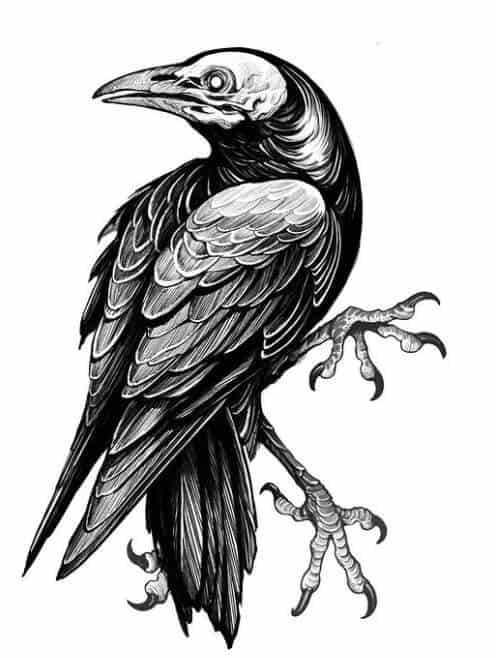
Another popular belief in ancient Japanese mythology is that Yatagarasu is the epitome of the sun. This is because the number three is historically used by the Japanese people to represent the sun hence the correlation to the three legs of the Yatagarasu.
This proves the fact that the Yatagarasu can be regarded as a popular symbol in Japan that represents the periods the sun is visible to the Earth such as dawn, noon, and dusk.
One of the famous myths surrounding the Karasu symbol is how the Yatagarasu saved Emperor Jinmu and guided him when he was lost in another country. It’s believed that was the incident that gave life to the Karasu symbol in Japanese mythology and why crows are revered as deities.
The Origin Of The Karasu Symbol
As we mentioned above, the Karasu symbol is believed to have come to be after the folk of how Emperor Jimmu was rescued from an unfortunate incident.
According to Japanese Shinto traditions, Emperor Jimmu is regarded to be one of the descendants of the Sun goddess. Emperor Jimmu was one of the soldiers who partook in a battle in another country.
When Jimmu’s brother was killed during the battle, Jimmu deemed the battle tough and considered it as fighting with the sun.
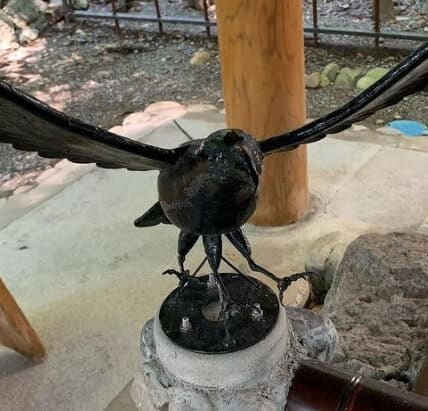
After taking a night to rest and executing a plan of attack, Emperor Jimmu decided to pass through the three Kumano mountains. In these mountains, Emperor Jimmu came across a three-legged crow, a Yatargasu which guided him to the Yamato region. With the aid of the Yatargasu, Emperor Jimmu was able to be victorious in the battle and return back home.
The Kumano mountains in Japan are a famous ancient pilgrimage site where crows are revered as ancient deities and are worshipped. There are temples and shrines in the Kumano mountains which display pictures of the Yatargasu on banners. There are even idols that look like the Yatargasu as well.
The story surrounding Emperor Jimmu’s victory was why the Yatargasu was and is regarded as a significant symbol in Japanese mythology. Hence, how the Karasu symbol became a part of Japanese writings.
Importance Of Crows In The Japanese Culture
Crows are regarded as one of the holiest birds in Japanese culture for several reasons. The three-legged crow or the Yatagarasu as the Japanese people call it is believed to be a bird sent from god from the heavens to save Emperor Jimmu.
And that’s not the only role crows play in Japanese mythology. They’re also involved in intervening in human affairs by either encouraging or questioning the humans.
Crows in Japanese mythology are also associated with good luck, reincarnation, and a trustworthy guide to human beings in times of need.
Difference Between Karasu And Tori Symbols
Remember when we mentioned above that the Karasu symbol is similar to the Tori symbol in Japanese? Let’s take a look at how they differ below.
If you’ve studied Japanese or are familiar with the Japanese letters you know how intricate they are. Japanese letters consist of kanji, hiragana, and katakana characters, and most of them are derived from Chinese or Mandarin alphabets.
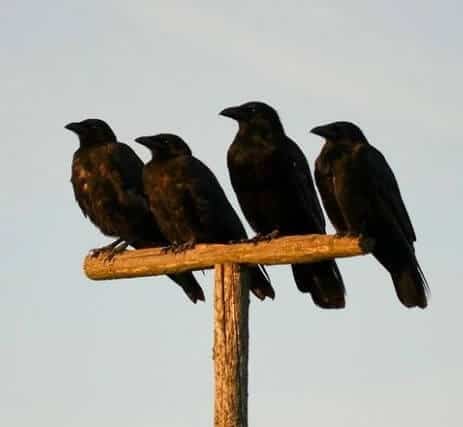
These letters are ideograms which means the letters have meanings that can alter depending on how they’re used. In addition, most of these characters also have similar appearances which are why a lot of people get confused when looking at them.
For instance, if you take a look at the Karasu symbol 烏 and the Tori symbol 鳥 you will most probably think that both letters are the same.
Although they look identical, there’s a very small detail that differentiates these two letters apart. It’s that one small line that’s drawn on top that makes this symbol (烏) the Karasu and this one (鳥) the Tori different.
The small stroke that’s in the letter/word Tori 鳥 represents the eye of the bird which is visible due to the bird’s eyes having a light color. However, with crows, the eyes have a dark color hence why there’s no line to represent the eyes of a crow.
If you ever come across these symbols make sure to look for a little stroke on the top of the letter because that will make it convenient for you to identify whether or not it’s a Karasu symbol.
Depiction Of Crows In Modern Japanese Culture
We just saw how crows are a big deal in ancient Japanese traditions. They’re also a big deal in other countries too because they’re known to litter places and disturb people.
Even today crows are portrayed in some of the aspects of activities in Japan. For instance, the symbol of the Japanese Football Federation is a three-legged crow (Yatagarasu).
In the symbol, you can see a shield with red and blue stripes which represent the flag of Japan, and a Yatagarasu standing on its two legs while the third leg holds a red football.
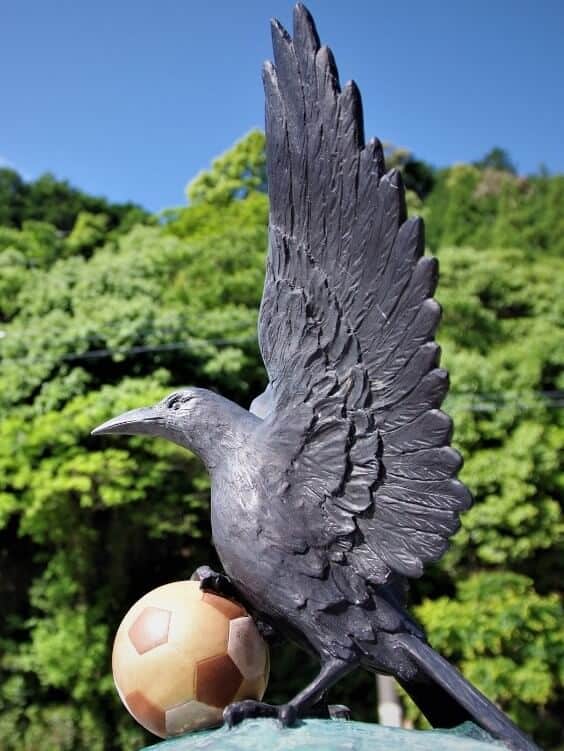
If you’re wondering why a crow would be the symbol of Japan’s national football team, you should remember that the Japanese presume crows to be associated with good luck and victory. Now, who wouldn’t want a crow to symbolize their team if it brings victory to them?
Apart from sports, crows are also portrayed in some popular anime series like Naruto Shippuden and Demon Slayer: Kimetsu no Yaiba.
In Naruto, crows are important figures in the Uchiha family. Itachi from the Uchiha family possesses a genjutso technique that allows him to create illusions of several crows.
Meanwhile, in Demon Slayer: Kimetsu no Yaiba crows are portrayed to be messengers of the Demon Slayers.
Karasu Symbol Of The Crow In Japan: FAQs
Does Karasu mean crow?
Karasu is the Japanese symbol of a crow which is written as 烏. This symbol represents a crow, but the symbol or letter itself doesn’t mean a crow or any one species of bird. However, the Karasu symbol is translated to crow in the English language hence several people regard the Karasu symbol as a crow.
What does a crow symbolize in Japan?
Crows are regarded as one of the holiest creatures in Japanese mythology and culture. One popular myth about crows in Japanese folklore revolves around the tale of Yatagarasu which is Japanese for a three-legged crow. According to Shinto mythology, Emperor Jimmu was guided during a battle by a Yatagarasu to Yamato where he became victorious. Crows are also believed to be messengers from Japanese gods who intervene in human affairs and guide them.
What do crows symbolize in anime?
According to Japanese mythology, crows are considered to be divine birds. They’re presumed to carry messages from Japanese gods and intervene in human affairs especially to guide those who are lost or to help a good person in times of need. In anime, crows are also portrayed to be birds that have a very close relationship with humans. In Demon Slayer: Kimetsu no Yaiba, crows are the messengers of the Demon Slayers which help them communicate with the Demon Slayer Corps.
What does Karasu mean in Japanese?
Karasu is a Japanese symbol 烏 that represents crows. Although the Karasu symbol represents crows in Japanese, the letter or the word Karasu doesn’t mean one species of birds. Karasu is a collective word that’s used to refer to birds from the Corvidae family which are similar in appearance to crows. One of the popular myths of crows in Japanese folklore is the tale of Yatagarasu, the three-legged crow.


